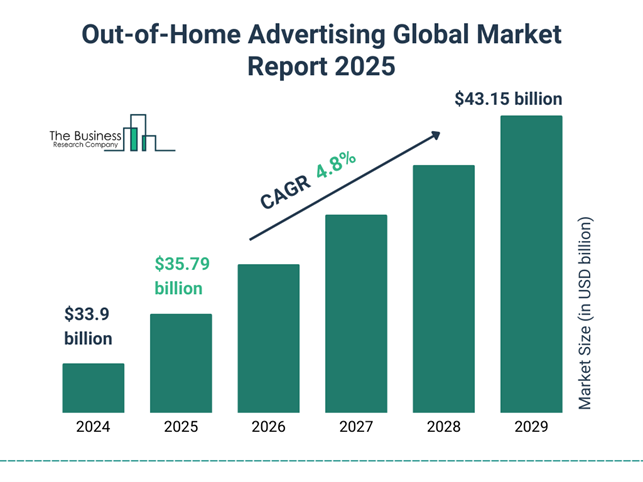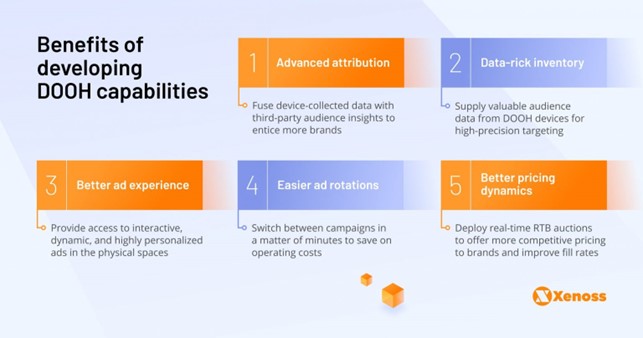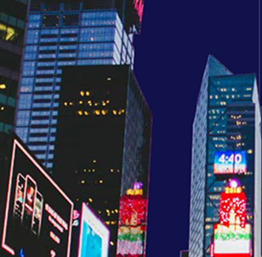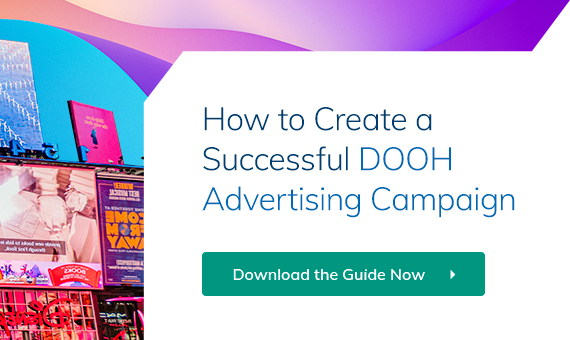OOH Marketing Provides a Tangible Complement to Digital Strategies
With much of today’s commercial activity taking place online through ecommerce portals, marketplaces, and other venues, there’s a temptation for brands to restrict their marketing activities solely to the digital realm. However, doing so ignores the fact that many consumers still rely on offline sources like stores and warehouses for their purchasing action.
Moreover, a sole focus on digital advertising misses opportunities for bridging the gap between on- and offline commerce – and for increasing brand awareness and driving traffic to both real world outlets and digital platforms.
Integrating out-of-home or OOH marketing into the advertising mix can help in achieving this ideal balance.
Brands are showing increasing appreciation of this fact.
The Out-Of-Home Advertising Global Market Report 2025 indicates that the OOH advertising market will grow from $33.9 billion in 2024 to $35.79 billion in 2025 at a compound annual growth rate (CAGR) of 5.6%. Rapid economic growth in emerging markets, increasing globalization, the rising scale of transit advertising and rapid developments in technology are all fueling this trend.

(Image source: The Business Research Company)
What Is OOH Marketing?
Put simply, OOH marketing refers to advertising that reaches consumers while they are outside their homes, typically in public spaces. This includes billboards, transit ads (on buses, trains, and taxis), posters, and digital signage in high-traffic areas like shopping malls, airports, and city centers.
OOH marketing is designed to capture attention through bold visuals and strategic placement, making it a powerful tool for brand awareness. Unlike online ads, OOH isn’t skippable or blocked, ensuring high visibility.
With advancements in digital out-of-home (DOOH) and programmatic DOOH (pDOOH) advertising, brands can now leverage real-time data and interactivity to enhance audience engagement and campaign effectiveness.
Benefits of OOH Marketing
Using OOH marketing offers several benefits, including:
Extensive Reach
Situated in major public spaces and transport routes, and in locations across the globe, OOH marketing has the potential to expose brands and their messaging to an audience of millions. This includes local commuters, tourists, and occasional visitors to any locality in which OOH displays are situated.
Impact and Engagement
With their physical scale, and the imagination of creative marketers, OOH advertising can have considerable visual impact, and create brand awareness through engaging and entertaining content.
Perpetual Presence
OOH marketing has an “always on” quality, giving brands the option to expose their messaging to potential consumers throughout each day, and across extended periods. What’s more, OOH marketing is very hard to ignore – unlike online and mobile advertising, which viewers can easily skip or block with specialist software.
Greater Credibility
The sad fact for digital marketers is that online advertising has a comparatively low trust level compared to OOH marketing.
In fact, the Accenture, Life Trends 2025, Nielsen Global Trust in Advertising Survey reveals that 60% of people are questioning the authenticity of online content – more than ever before. In addition, 56% of Generation Z consumers trust OOH marketing (as opposed to 36% trust for online banners, and 45% trust for social media).
Integrating OOH Marketing into Overall Marketing Strategies
The key consideration for agencies looking to integrate OOH marketing into a client’s overall advertising strategy is to create a holistic environment that maintains a cohesive brand experience across all platforms, while reinforcing key messages and driving traffic to online platforms for further interaction. In this context, it’s important to:
Maintain Consistency
OOH marketing should align with a brand’s visual identity, messaging, and tone across all channels. Consistent branding ensures that consumers immediately recognize a campaign, whether they see it on a billboard, social media post, or website. The creative elements – colors, fonts, slogans, and imagery – should be uniform across OOH and digital channels to build a seamless brand experience.
Example: A fitness brand launching a new running shoe could display bold, action-packed imagery in its OOH ads that match the visuals used in its digital marketing. A customer who first sees the ad on a transit shelter might later encounter an Instagram ad with the same creative, reinforcing brand recall.
Use Real-time Responsive and Interactive Elements
Modern OOH advertising isn’t just about static displays – it can foster engagement through interactive elements such as QR codes, NFC technology, augmented reality (AR), and live data feeds. These elements bridge the gap between offline and online experiences, directing audiences to a website, social media page, or even an exclusive mobile experience.
Example: A movie streaming service could place interactive digital screens in shopping malls where passersby can scan a QR code to watch a teaser trailer. Users who engage with the display could be offered a free trial subscription, encouraging direct digital interaction.
Use Location-Based Targeting
OOH marketing thrives on strategic placement. With the powerful pDOOH platforms available today, agencies can easily research audience behavior and foot traffic patterns to ensure ads are placed where they will have the most impact. Data on consumer demographics, local events, and peak commuting times can help determine optimal billboard locations, transit advertising routes, and digital signage placement.
Example: A luxury fashion brand might place OOH ads near high-end shopping districts or in airports where affluent travelers are likely to see them. Meanwhile, a fast-food chain could install digital menu billboards near busy intersections, showing lunch specials just before noon to target office workers.
Promote in Line with The Customer Journey
OOH marketing works best when it complements each stage of the customer journey. Campaigns should be designed to introduce a brand at the awareness stage, build interest at the consideration stage, and encourage action at the decision stage.
- Awareness Stage: Large-format billboards and high-traffic transit ads introduce a product or service to a broad audience.
- Consideration Stage: Digital OOH (DOOH) screens in town and city centers can deliver more detailed messaging, showcasing product features or customer testimonials.
- Decision Stage: Interactive kiosks or digital signage near stores can provide promotional offers or direct customers to the nearest point of sale.
Example: A coffee brand could use high-visibility billboards in city centers to create awareness of a new flavor. Then, digital transit screens near subway stations could highlight limited-time offers. Finally, an interactive touchscreen near a café entrance could let customers redeem a discount by scanning a QR code.
Use Data-Driven Insights
Tracking the effectiveness of OOH marketing is crucial. Brands can use mobile location data, foot traffic analytics, weather-based triggers, and AI-driven insights to measure engagement and optimize campaigns. Digital screens allow real-time adjustments, ensuring ads are shown at the most effective times.
Example: A sportswear company could use geofencing to analyze how many people who saw their digital billboards in a shopping mall later visited their store. If engagement is low, they can adjust the campaign – perhaps changing the visuals, location, or timing – to improve effectiveness.
Promote Across Channels
OOH advertising shouldn’t exist in isolation – it should be amplified through social media, email marketing, influencer collaborations, and website promotions to drive further engagement. Agencies should integrate OOH messaging into content marketing efforts to create a continuous brand experience across platforms.
Example: A travel agency launching a new vacation package might feature breathtaking imagery of tropical destinations on OOH billboards, then run a complementary hashtag campaign on TikTok or Instagram encouraging people to share their dream vacations. A matching landing page on their website could provide exclusive deals for those who saw the campaign in the real world.
Taking the Next Step
Digital Out-Of-Home or DOOH advertising takes OOH marketing to a new level, with cost-effective technology-driven solutions that allow for personalization, which can provide an outstanding customer experience that drives engagement and sales. In fact, there are several advantages for developing DOOH capabilities as part of your marketing mix.

(Image source: Xenoss)
Choosing the right technology partner is particularly important to realizing these benefits – and that’s where The Neuron comes in.
Specializing in programmatic DOOH, The Neuron offers an innovative platform that makes it easy to deliver targeted, dynamic DOOH campaigns across a global network of digital screens. The Neuron provides high-powered campaign planning with POI mapping, targeting sets, and precise screen selection for maximum impact.
To learn more about how we can assist in integrating OOH marketing with your client’s digital marketing strategies, visit our website.


